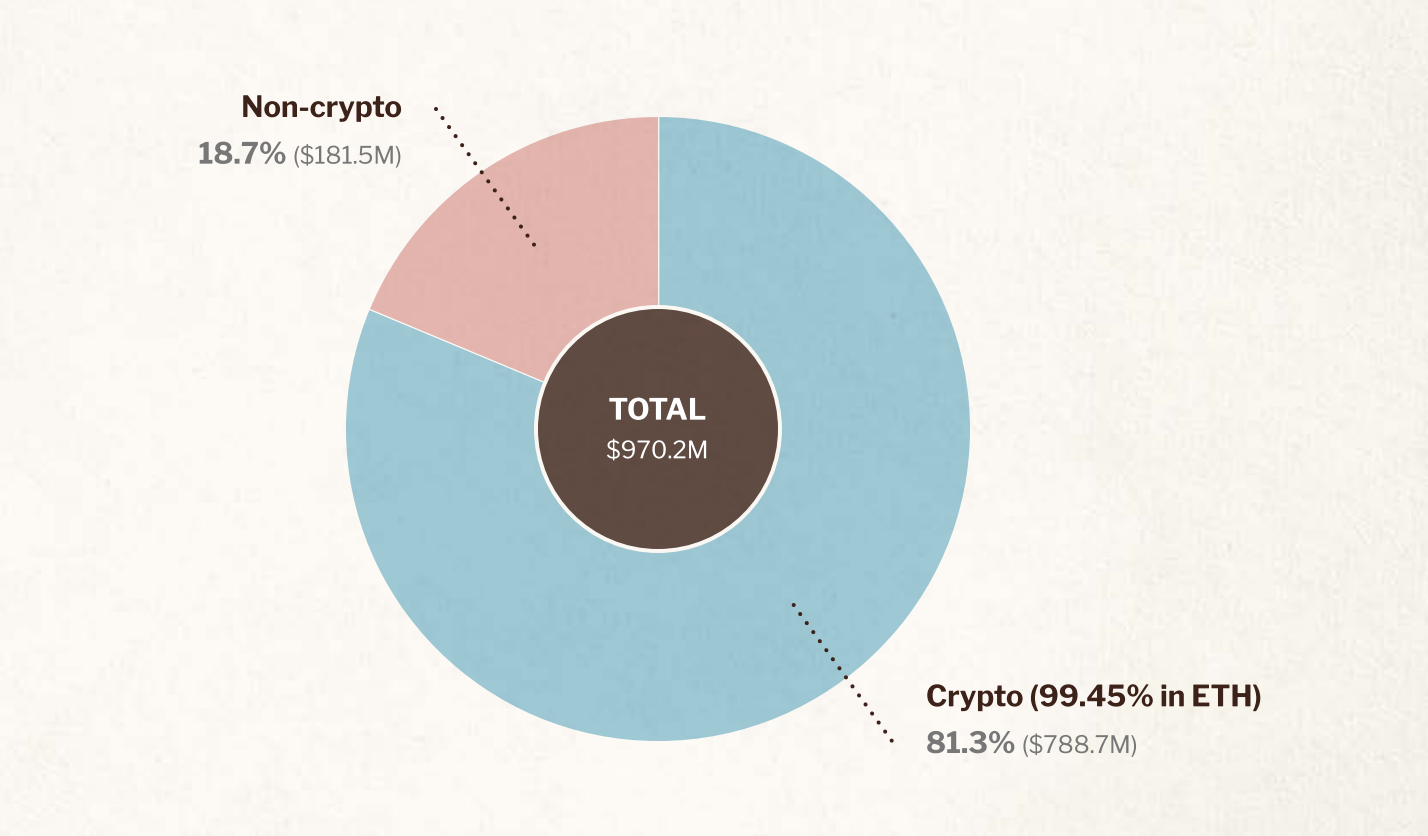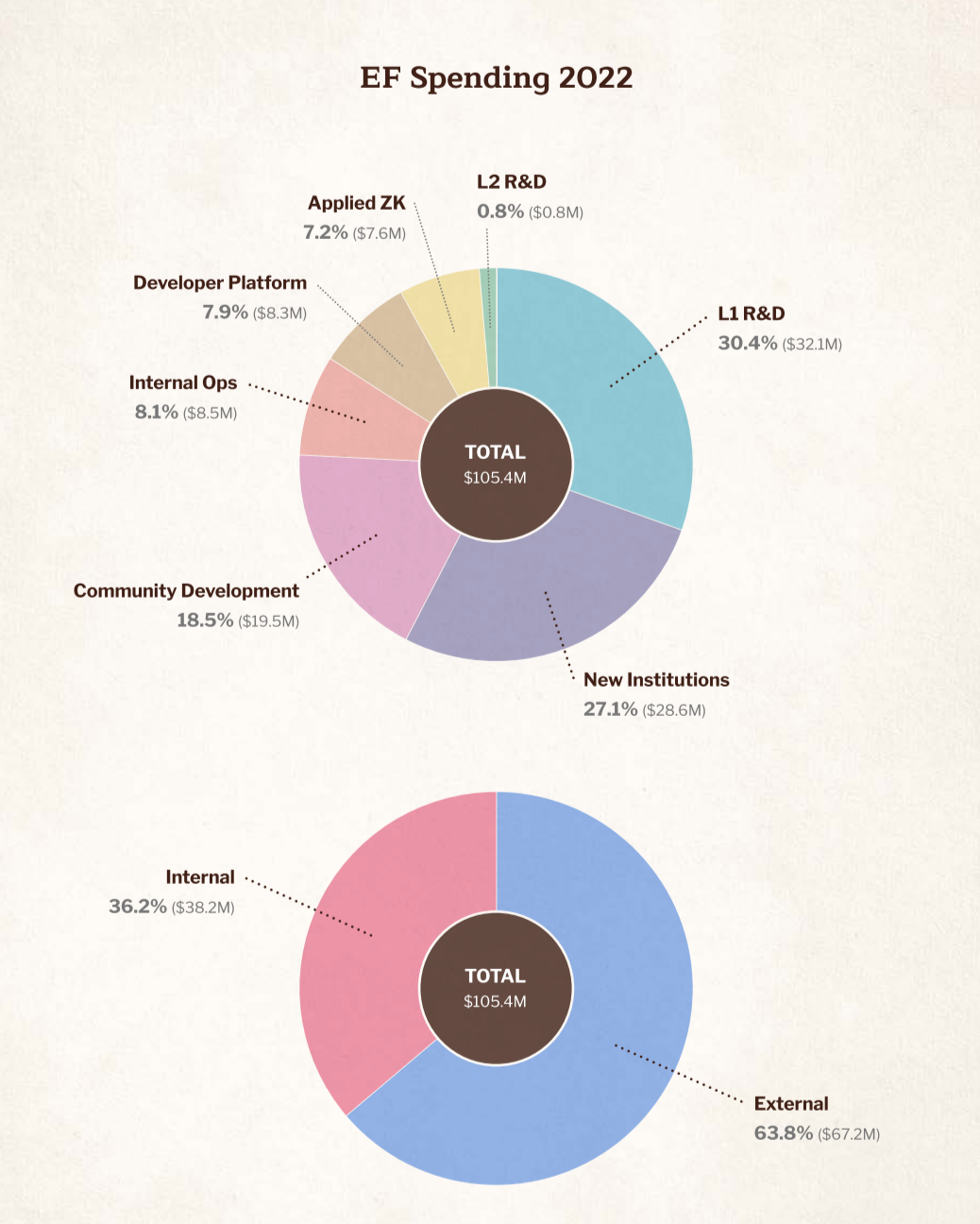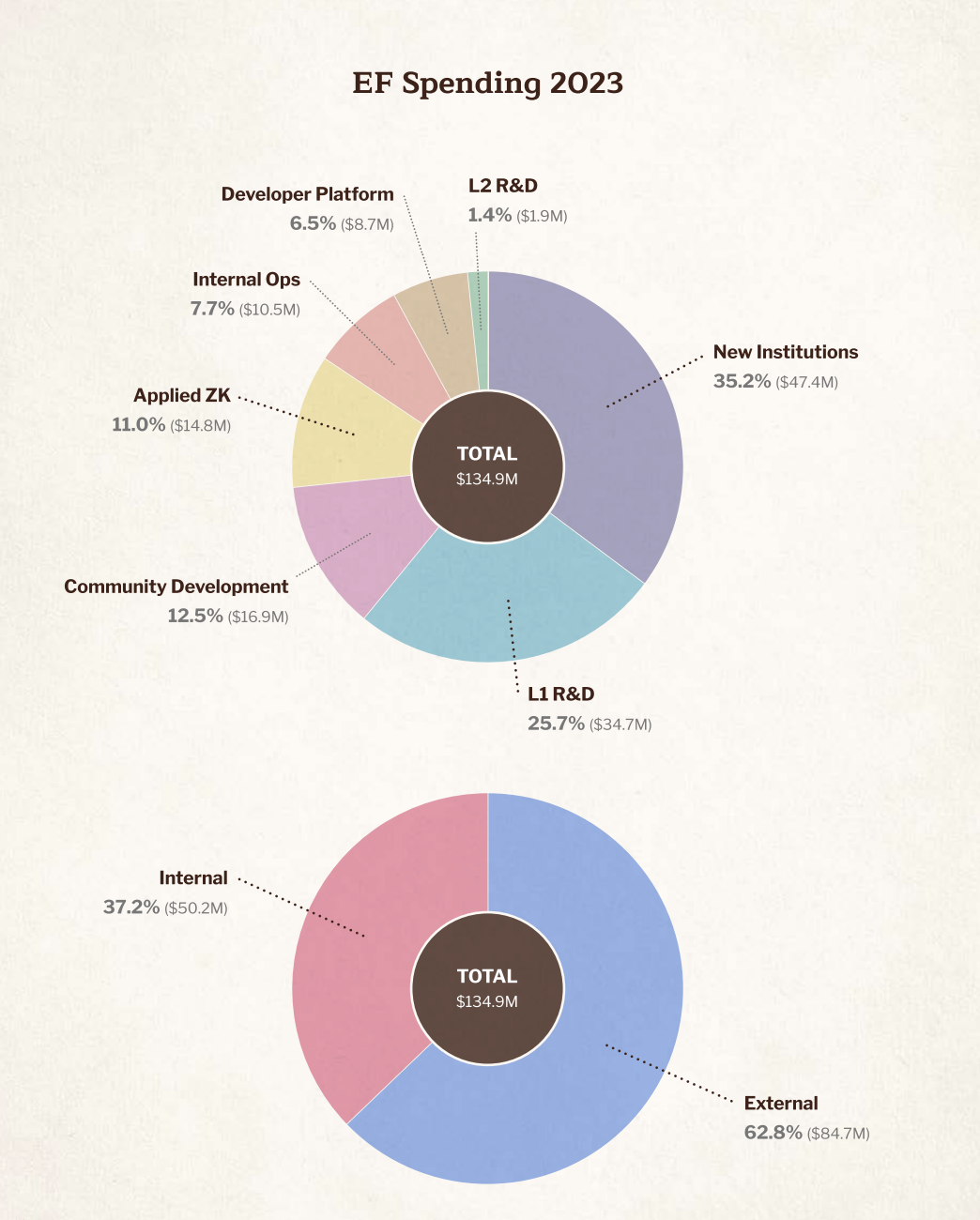Understanding the Ethereum Foundation’s 2024 Report and Meeting Compliance Challenges in the Trump Era
The 2024 US election has finally come to an end, and Trump, who has received much attention and support from the 暗号 industry, has returned to the White House. I wonder if your circle of friends was flooded with his posts. Unlike the last term, his return to the White House this time may bring a more friendly and favorable regulatory policy environment to the crypto industry.
*Image source: X.com
During the election, there were many weird moves such as BTC strategic reserves, Americanization of mining, and the removal of the current SEC chairman. But the key law that will affect the development of crypto assets and Web3 projects in the next few years is the Financial Innovation and Technology for the 21st Century Act (FIT21). Currently, the bill has been passed by the U.S. House of Representatives with a high vote of 279:136, and it is very likely to be quickly passed by the Senate and become law after Trump takes office.
We all know that most Web3 projects will choose to establish foundations to cooperate with local and global supervision after they grow in scale. So, what impact will the FIT21 bill have on Web3 projects, especially Web3 foundations? First, let attorney Mankiw sort out the core of FIT21 for everyone.
FIT21 Act: Reデフィning Crypto Assets
The FIT21 bill is led by the Republican Party. On the one hand, it responds to the long-standing concerns of the crypto industry about regulatory uncertainty, on the other hand, it outlines a clearer regulatory red line for the crypto industry, and also attempts to reduce potential market chaos from the source. The most striking aspect of the bill is that it redefines which crypto assets can be considered commodities rather than securities, and this division directly determines what type of regulation these assets will be subject to.
To achieve this goal, the FIT21 Act establishes three core criteria to help define the nature and regulatory scope of assets:
20% of tokens control the red line
The FIT21 Act stipulates that if any single entity or related party controls more than 20% of the tokens, the project will be classified as a security and will be subject to strict supervision by the SEC. The purpose of this regulation is to prevent the market from being manipulated by a few large holders.
For projects that want to be identified as commodities and receive looser regulation, this 20% cap is both a restriction and a compliance ガイド. Project owners need to design a reasonable token distribution plan to disperse control among many holders and form a distributed governance model rather than being controlled by a few core teams.
Decentralized governance structure
The FIT21 Act has equally strict requirements for decentralized governance, aiming to ensure that the projects decision-making mechanism is truly decentralized. This is not just about the decentralization of control, but also about the transparency and independence of governance. For example, the project needs to introduce an open and transparent voting mechanism so that token holders can truly participate in key decisions. In this way, governance is not just decentralized on the surface, but has substantial public participation.
In addition, the bill also proposes transparency standards for governance structures. In simple terms, the project side needs to disclose key governance rules and processes, such as the execution conditions for major decisions or the triggering rules for codes, so that token holders can clearly understand how the project works and reduce the possibility of black box operations by the core team. This transparent governance structure can win more user trust for the project and is also an effective means of compliance.
Information disclosure and transparency requirements
The FIT21 Act has relatively flexible requirements for information disclosure, and provides different disclosure standards based on the degree of decentralization and the nature of the project. For projects that meet the decentralization requirements and are classified as commodities, the Act allows them to enjoy relatively relaxed information disclosure obligations, but key financial information, token distribution, and community governance proposals still need to be disclosed to the public on a regular basis to ensure transparency. For projects that are considered securities, they need to make regular and comprehensive financial disclosures like traditional securities to ensure investors right to know.
At the same time, in addition to setting standards, the FIT21 Act has very humanely introduced a safe harbor clause, which provides a critical compliance transition period for crypto projects. For those projects that have not yet fully achieved decentralization, as long as the project party promises to meet the decentralization standards within the specified time, they can continue to operate during the exemption period without being strictly bound by securities supervision. This clause gives the project party time to gradually improve its governance structure and community management, reducing the short-term adjustment risks caused by compliance pressure. This flexible buffer mechanism not only protects the innovation space of the project party, but also ensures its long-term compliance direction, creating a stable policy environment for the healthy development of the crypto industry.
So, in the context of the foreseeable FIT21 bill about to come into force, how should Web3 projects respond, both in terms of token governance and organizational structure?
Mankun has long recommended and assisted Web3 project parties in setting up foundations to ensure global compliance (if you need support, you can add Mankun customer service: MankunLawFirm). At the same time, he has also written many articles to share the advantages and plans of setting up foundations, such as Web3 Project Compliance: Why Choose Cayman Foundation for Token Issuance? そして V God Selection: Why Choose Swiss Foundation for Web3 Project Token Issuance?
So after the establishment of the foundation, how can this organizational structure meet the decentralized standards of the FIT21 Act? Coincidentally, the Ethereum Foundation (EF) released its 2024 annual report. Attorney Mankiw used this to interpret it.
Three highlights of the Ethereum Foundation 2024 report
The 2024 annual report released by the Ethereum Foundation is a total of 27 pages. It is short but very informative. From the organizational structure to the treasury funds to the annual expenditure, the report of the Ethereum Foundation clearly discloses everything, which also gives us a glimpse into the structure and current status of the worlds largest Web3 foundation.
Attorney Mankiw specifically reminded: For Web3 project parties who want to set up foundations, this report is a compliance showroom. Next, in conjunction with the FIT21 Act, we will dismantle the Ethereum Foundations compliance path to regulation, and everyone is requested to take notes.
Decentralized Governance
In its 2024 annual report, the Ethereum Foundation disclosed in detail the functions and division of labor of several key teams, including the development team, research department, ecosystem support team, and risk management group. These teams operate independently and supervise each other. Not only do they have a clear division of labor in technical development and project support, but they also demonstrate the foundations commitment to decentralization in the governance structure. For example, the development team focuses on technical upgrades of the core protocol, the research department is responsible for future innovation exploration, and the ecosystem support team promotes community education and ecosystem expansion. These functional divisions avoid excessive concentration of decision-making power on a single team and ensure decentralized governance.
In addition, the Foundation has delegated some key decision-making power to coin holders and ecosystem participants through community voting and open proposals, allowing the community to truly participate in the future development of the project. In this way, not only are the functional boundaries of the team clear, but governance also remains transparent and community-oriented. This governance model fundamentally meets FIT21s requirements for decentralization, reduces the risk of manipulation by a single controlling party, and provides a guarantee for the long-term healthy development of the project.
Treasury funds held
The Ethereum Foundations 2024 annual report discloses its current treasury fund holdings. Data shows that the Ethereum Foundation currently holds $788.7M in crypto assets, of which 99.45% is ETH, which means the total value of ETH is about $784.4M. Combined with the current ETH market data, the total amount of ETH held by the Ethereum Foundation is about 261,000, accounting for about 0.22% of the total supply of Ethereum.
This data shows that the Ethereum Foundations ETH holdings remain at a relatively low level, which not only avoids excessive impact on the market, but also reduces the liquidity pressure of concentrated holdings. It is far below the 20% red line of the FIT21 Act, ensuring that ETH will no longer be criticized by the SEC as a security under the new law. In addition to crypto assets, the Ethereum Foundation also holds about $300 million in traditional financial assets, such as fiat currencies and bonds, to ensure its risk resistance in the face of market fluctuations.
This diversified fund management method not only increases financial robustness, but also demonstrates the Ethereum Foundations emphasis on decentralization and transparency. This financial strategy of lightweight holdings + diversified allocation also provides an important reference for other Web3 projects: while promoting ecological development, ensuring long-term financial support through reasonable allocation, laying a solid foundation for achieving more resilient growth in a changing regulatory environment.
Annual financial data
The Ethereum Foundations 2024 annual report provides a detailed disclosure of the financial situation over the past two years, clearly showing the use and management of funds between 2022 and 2023. Data shows that the Foundations expenditures are mainly concentrated in three major areas: core development, ecosystem funding, and operational reserves, covering security upgrades of core protocols, ecosystem support, and risk management.
Specifically, the report shows that the Ethereum Foundation has invested significantly in the development of core protocols over the past year, including the research and development of emerging technologies such as Layer 2 expansion technology and zero-knowledge proofs to maintain the innovation and security of the Ethereum network. In addition, the Foundation has increased its funding for the ecosystem, supporting the developer community and the incubation of various new projects, thereby promoting the long-term development of the Ethereum ecosystem. Such funding programs cover new project incubation, education and training, and community activities, providing impetus for the sustainability of the Ethereum network.
The Ethereum Foundations open and transparent fund management strategy complies with the FIT21 Acts requirements for financial disclosure, providing a strong compliance reference for the future development of the Web3 industry. At the same time, this fully transparent data disclosure also helps to build market trust and lays the foundation for compliance and resilience for the sustainable development of the project.
Attorney Mankiw recommends
At present, with Trump taking office, the FIT21 bill seems to have reached the point of being set in stone. Just like the impact of the EU MiCA bill on global crypto asset regulation, once the FIT 2 bill is officially passed by the Senate and becomes law, it will surely have a crucial impact on the characterization of global crypto assets. Therefore, whether it is for Web3 project parties who want to establish a foundation or have already established one and are considering compliance supervision, it is necessary to copy this homework of the Ethereum Foundation:
-
Reasonable distribution of tokens to ensure the implementation of decentralized governance
The 20% control red line proposed by the FIT21 Act requires many projects to be more cautious in token distribution. Therefore, it is crucial to design a reasonable token distribution plan in the early stages of a project. By introducing multi-party governance mechanisms, such as token holder voting and community proposal management, the decision-making power is gradually delegated to community members. This transparent governance model not only helps projects meet the FIT21 decentralization standards, but also greatly improves community participation and lays a solid foundation for support for the project.
-
Diversify fund holdings to enhance financial stability
The diversified fund allocation demonstrated by the Ethereum Foundation is a typical prudent strategy that is not limited to holding crypto assets, but also covers traditional financial instruments such as fiat currencies and bonds. Web3 project owners can also refer to the diversification of fund management to avoid concentrated holding of a single asset, especially the market volatility risk caused by highly volatile crypto assets. Through flexible allocation, project owners can maintain sufficient liquidity and risk resistance in market fluctuations, ensure financial stability, and provide reliable support for the long-term development of the project.
-
Emphasis on information disclosure and transparency
Under the FIT21 framework, information disclosure has become one of the key factors affecting project compliance. Web3 projects actively disclose transparent information in terms of fund flows, token distribution, governance mechanisms, etc. You can refer to the disclosure method of the Ethereum Foundation and regularly disclose key information such as project development progress and fund usage to provide reliable reference data for the community and investors. This not only helps with compliance, but also enhances community trust and reduces potential legal and reputation risks.
Of course, if you intend to establish a Web3 Foundation and hope to achieve compliance at the initial stage, Mankiw LLP will be your trusted partner. As a senior law firm deeply involved in the blockchain and new economy fields, our team has many experienced Web3 lawyers, whose expertise covers foundation site selection, establishment, and architecture design, and has successfully co-organized foundation projects many times.
We always believe that compliance is not only a protection for projects, but also the cornerstone for promoting the steady development of the Web3 industry. If you have any related needs, please feel free to consult Mankiw Law Firm at any time. We will be happy to provide you with compliance consulting and professional guidance to help your project develop steadily and compliantly in the Web3 ecosystem, and jointly promote the Web3 industry towards a more compliant and transparent future.
This article is sourced from the internet: Understanding the Ethereum Foundation’s 2024 Report and Meeting Compliance Challenges in the Trump Era
Related: BTC Volatility: Week in Review October 28 – November 4, 2024
Key indicators: (October 28, 4pm -> November 4, 4pm Hong Kong time) BTC/USD price increased by +0.15% ($68,500->$68,600), ETH/USD price decreased by -2.4% ($2,520->$2,460) BTC/USD ATM volatility increased by +3.7 points at the end of the year (December) (54.3->58.0), and 25 delta skewness decreased by -0.6 points at the end of the year (3.7->3.1) Spot technical indicators at a glance: On Wednesday, the price of the coin hit a record high, which initially made us feel that we underestimated the potential of the spot market to explode before the election. However, the price of the coin failed to sustain the high point and quickly fell back, and the price of 70k US dollars has become the main resistance level again. At the same time, the highest price set will become…












